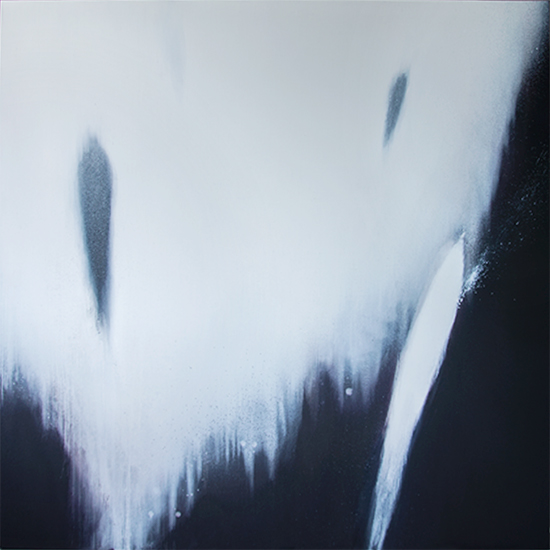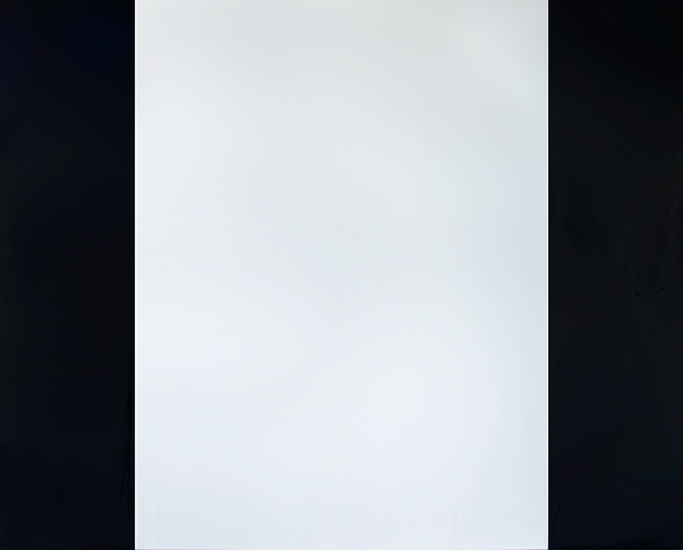Non-Place: Peripherals, a solo presentation by Singaporean-artist Luke Heng
Luke Heng’s practice employs the critical inquiry into the formal materiality of various media, including oil paint and paraffin wax among others, to explore spiritual, metaphysical and phenomenological themes. His experimentation in pictorial space and depth is evocative of abstract expressionist painters, as well as certain strands of minimalist abstraction.
Heng’s solo presentation at the 2020 edition of S.E.A Focus, titled Non-Place: Peripherals continues the artist’s exploration of spatial and form manipulation. Here in its latest iteration, the artist presents four monochromatic paintings from his ongoing “Non-Place” series, playing up the interrelations and gaps between each work.
Within the plane of his “Non-Place” paintings, each piece is first coated up with multilayers of oil paint, before Heng pours thinner on its top surface. It produces ethereal, gestural ‘brushstrokes’: void spaces left behind after its top layer of paint has been dissolved, revealing and coalescing the underlying strata. A striking play on the illusionistic tradition of trompe l’oeil, this deconstructive act not only confounds our grasp of the pictorial space, but also critically re-examines the idiomatic relationship between gesture, mark and time. The gesture of adding a substance that paradoxically takes away is in itself liminal; an act both of destruction and construction. Moving away from the gestural mark as a signifier of passed time, Heng’s gesture “undoes” or “reverses” time in its erosion of the pictorial surface, even as the dilution of paint itself acts as another trace of time moving forward.
Heng further extends his manipulation of spatial perception from the paintings onto their surrounding space: on the booth walls itself, with a section painted black in a stark juxtaposition against white. Adding another layer of trompe l’oeil, the black wall appears to merge with forms on the paintings themselves, obfuscating the line demarcating where each begins and ends.
The forms that emerge, in their tension between positive and negative space, open up other modes of liminal experience. As shifting and unstable signifiers, Heng’s “non-places” move the point to the threshold between transcendence and nothingness, continuing his practice’s engagement with themes of transience and impermanence.



